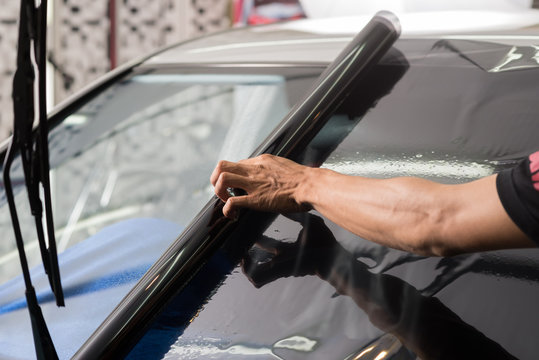WHAT DUAL LAYER CERAMIC TINT CAN DO FOR YOU
Dual-layer ceramic tint is a type of window film that consists of two layers of ceramic material. It offers several benefits, including:
Heat reduction:
Dual-layer auto tinting ceramic tint blocks up to 99% of UV rays and reduces the amount of heat that enters your car or home, keeping the interior cooler and more comfortable.
Glare reduction:
Dual-layer ceramic tint can also reduce glare, which can be helpful when driving during the day or when using electronic devices.
Protection from fading:
The film's UV protection can help prevent furniture, carpets, and other interior items from fading over time.
Privacy:
Dual-layer ceramic tint can also provide privacy by reducing visibility from the outside.
Security:
The film can also add an extra layer of security by making it more difficult for someone to break into your car or home.
Overall, dual-layer ceramic tint can help to create a more comfortable and secure environment, while also protecting your interior from UV damage and fading.
What’s the difference between regular and ceramic window tint?
Regular window tinting films are made of dyed, metallized, or hybrid materials that block heat and glare from the sun.
These films are usually less expensive than ceramic films and offer varying levels of heat reduction, UV protection, and privacy depending on the type of film used.
Ceramic window tint, on the other hand:
is made using non-metallic, nano-ceramic particles that are embedded in a thin layer of polyester film.
This type of film provides superior heat reduction and UV protection compared to regular films, and it also blocks up to 99% of UV rays,
helping to protect the interior of your vehicle or home from fading and damage:
Ceramic tint also doesn't interfere with electronic devices, such as cell phones or GPS systems, which can be an issue with regular tint.
Additionally, ceramic tinting is more durable and longer-lasting than regular tinting:
as it resists fading and discoloration over time. Ceramic films also tend to have a clearer, more natural appearance than traditional window tinting films, allowing for optimal visibility and aesthetics.
Overall, while regular window tinting is an effective option for reducing heat and glare, ceramic window tinting is a superior choice for those seeking maximum heat reduction, UV protection, durability, and clarity.
Regular window tint:
Regular window tint is a type of film that can be applied to the windows of a car, home, or office to reduce the amount of sunlight and
heat that enters the space. It is made of a thin layer of polyester film that is coated with a layer of adhesive and a layer of tinting material.
The tinting material can be made from a variety of materials, including metallic particles:
dyes, or ceramic nanoparticles, and it is designed to absorb or reflect some of the incoming solar radiation.
The amount of tinting that is allowed on car windows varies by state and country:
so it is important to check local laws before applying window tint to your car. In general, the amount of visible light transmission (VLT) that is allowed on the front windshield and front side windows is lower than on the rear windows.
Regular window tint can provide several benefits, including:
Reducing glare and eye strain caused by bright sunlight
Reducing the amount of heat that enters a space, which can help lower cooling costs
Reducing the amount of UV radiation that enters a space, which can help protect skin and reduce fading of furniture, carpets, and other items
Increasing privacy by making it harder for people outside to see into the space:
However, it is ceramic tinting important to note that some types of window tint may interfere with electronic devices, such as GPS or radio signals.
Additionally, some types of tint may not be legal in certain areas or on certain types of vehicles, so it is important to do your research before applying window tint.

Comments
Post a Comment